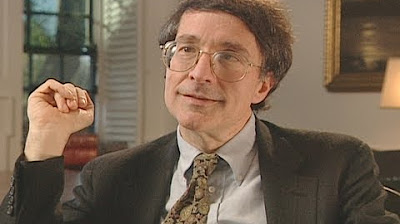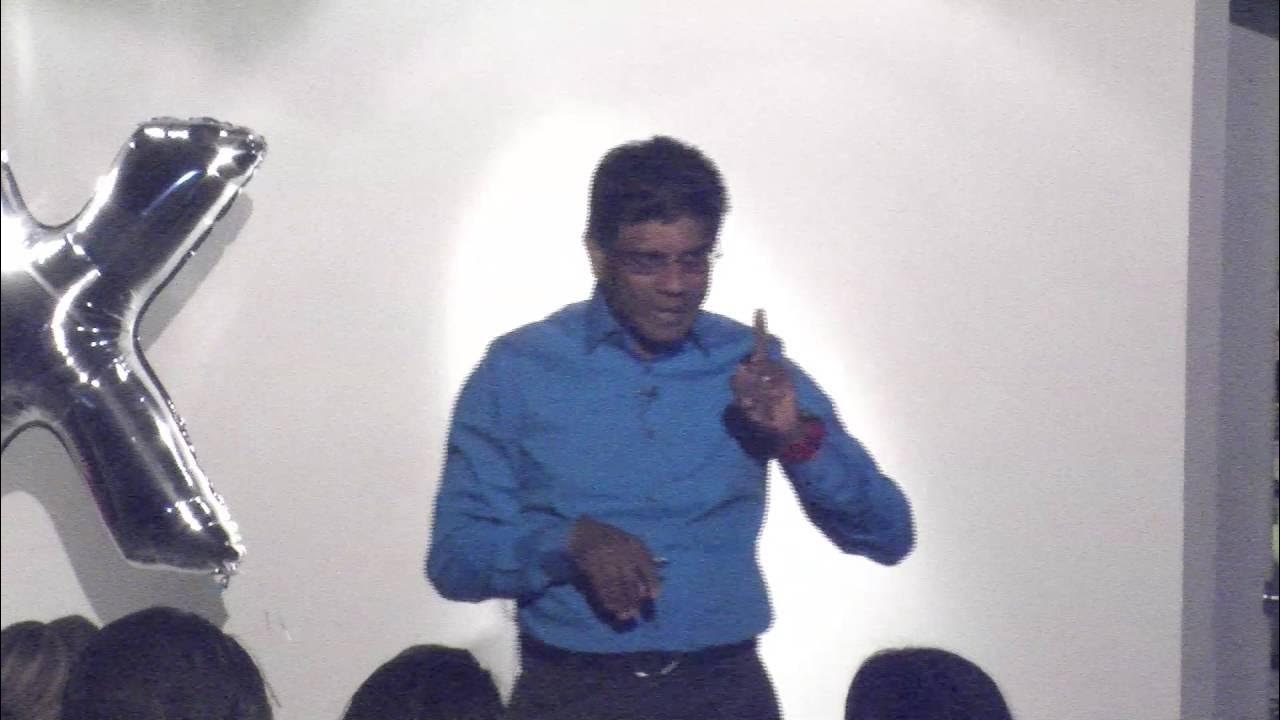Howard Gardner of The Multiple Intelligence Theory
TLDRThe video script emphasizes the importance of an active role in learning to ensure knowledge retention. It discusses the theory of multiple intelligences, highlighting the need for diverse teaching methods to cater to different intellectual strengths. The speaker advocates for a shift from memorization to hands-on learning, where students engage in experiments, analysis, and questioning. They argue that education should focus on a few key areas, teaching students to think critically and scientifically. The script also addresses the issue of assessment, suggesting that it should be transparent, formative, and student-centered, allowing for self-evaluation and growth. Finally, it calls for a change in American education, with examples of successful models, teacher and administrator buy-in, updated assessment schemes, and political commitment to lasting reform.
Takeaways
- 📚 Schools exist to equip children with knowledge and skills that they can apply long after leaving the educational system.
- 🔍 Active learning, such as conducting experiments, analyzing data, and engaging in hands-on activities, helps students retain information better than passive learning.
- 🧠 The concept of multiple intelligences highlights the diversity of intellectual strengths among individuals, which is crucial for personalized learning experiences.
- 🤔 Memorization of facts and definitions without understanding does not lead to long-term retention of knowledge.
- 👥 Recognizing different learning styles and providing resources that cater to these differences can enhance learning outcomes.
- 📚 The traditional model of education, which treats all students the same, is not the most effective way to educate diverse learners.
- 🌟 Education should focus on depth over breadth, encouraging students to deeply understand a few key subjects rather than superficially covering many.
- 🔬 In science education, it's more important to teach scientific thinking and the process of hypothesis testing than to cover a wide range of topics.
- 🎓 Assessment should be clear and aligned with the skills and knowledge that students are expected to master, rather than being a mystery.
- 🏆 Feedback and self-assessment are vital for students to understand their progress and areas for improvement.
- 🌐 For education reform to be successful, it requires examples of effective practices, belief and willingness from educators, updated assessment methods, and political support.
Q & A
Why is it important for students to actively participate in their learning process?
-Active participation helps students to deeply understand and retain the knowledge they acquire. Without active engagement, students may forget what they've learned after a year or two, even if they had good grades on exams.
What is the significance of hands-on learning in the educational process?
-Hands-on learning allows students to recreate concepts in their own minds, transform ideas, and apply them practically. This method helps in the long-term retention of knowledge and understanding.
What does the theory of multiple intelligences suggest about human intellectual strengths?
-The theory of multiple intelligences posits that humans have diverse intellectual strengths, which are crucial for how individuals learn, represent information in their minds, and demonstrate their understanding.
Why is it unfair to treat all students the same in education?
-Treating all students the same disregards their individual intellectual strengths and learning styles. An education system that does not accommodate these differences is unfair because it only values one type of intelligence, often to the detriment of others.
How can technology aid in providing personalized learning experiences?
-Technology can provide interactive software and materials that present information in a way that caters to each student's preferred learning style, allowing them to demonstrate their understanding in a manner that is comfortable and natural to them.
What is the myth about learning that the speaker is referring to?
-The myth is that the only way to learn something is through reading textbooks or listening to lectures, and the only way to show understanding is by taking short-answer tests or writing essays. The speaker argues that learning and demonstrating understanding can be done in multiple ways.
Why is focusing on a few educational priorities rather than covering a wide range of subjects beneficial?
-Focusing on a few priorities allows for a deeper exploration of subjects, leading to a more profound understanding. Covering too much material often results in superficial knowledge that is quickly forgotten after leaving school.
What is the importance of learning to think scientifically?
-Learning to think scientifically helps students understand the process of forming hypotheses, testing them, and revising theories based on evidence. This critical thinking skill is valuable for both college and the workplace.
How should assessment in education be approached to be most effective?
-Assessment should be clear, transparent, and focused on the performances and exhibitions students will be accountable for. It should provide early and continuous feedback, enabling students to self-assess and understand their progress.
What are the necessary components for a long-standing change in American education?
-For lasting change, there must be examples of successful implementations, belief and commitment from educators, updated assessment schemes that align with new educational approaches, and political support that encourages and sustains educational reform.
Why is it crucial for students to understand the difference between opinion and evidence-based statements?
-Understanding the difference is crucial because it equips students with the ability to critically evaluate information and make informed decisions, which is essential for functioning effectively in society and the workplace.
What is the role of feedback in the learning process, according to the speaker?
-Feedback is essential for students to gauge their progress and understand what they are doing well and what needs improvement. Over time, as students become more expert, they can internalize this feedback and engage in self-assessment, reducing the need for external critique.
Outlines
📚 Active Learning and Multiple Intelligences
This paragraph emphasizes the importance of active learning for long-term retention of knowledge. It discusses how engaging in hands-on activities, questioning, and analysis helps students to truly understand and remember what they have learned. The concept of multiple intelligences is introduced, highlighting the diverse ways in which individuals process and represent information. The speaker argues against a one-size-fits-all approach to education, advocating instead for diverse teaching methods that cater to different learning styles. The paragraph also criticizes the traditional focus on memorization and the superficial coverage of many subjects, suggesting that a more in-depth and personalized approach would lead to more meaningful learning experiences.
🎓 Reforming Education and Assessment
The second paragraph focuses on the need for educational reform, particularly in how students are assessed and how they demonstrate their understanding. It suggests that students should be aware from the start of what they will be held accountable for, emphasizing the importance of clear expectations and constructive feedback. The speaker shares personal experience as a writer, illustrating how learning to self-assess is crucial for growth. The paragraph calls for a shift from teacher-centered to student-centered education, where students are at the center of their learning journey. It also stresses the need for modern assessment methods that align with the new educational approach and for political commitment to support these changes. The paragraph concludes by directing interested individuals to edutopia.org for more information on successful public education practices.
Mindmap
Keywords
💡Active Learning
💡Multiple Intelligences
💡Hands-On Learning
💡Deep Learning
💡Educational Assessment
💡Student-Centered Education
💡Interdisciplinary Learning
💡Scientific Thinking
💡Hypothesis Testing
💡Self-Assessment
💡Educational Reform
Highlights
The importance of active learning for long-term retention of knowledge.
Evidence from science supporting the need for hands-on learning and questioning.
The ineffectiveness of memorization without understanding for long-term learning.
The concept of multiple intelligences and its impact on learning and teaching.
The unfairness of a one-size-fits-all education system given diverse learning strengths.
The necessity for education to adapt to different learning styles and intelligences.
Providing resources and materials that cater to various learning preferences.
The myth of traditional learning methods like textbooks and lectures.
The need for diverse teaching methods to reach every child effectively.
The superficiality of covering too many subjects without in-depth learning.
The emphasis on deep learning in a few key areas rather than a broad, shallow curriculum.
The significance of learning to think scientifically and understand the scientific method.
The importance of assessment that reflects real-world skills and understanding.
The need for clear, early, and ongoing feedback in the learning process.
The role of self-assessment and internalizing feedback for expert learning.
The challenges and requirements for a long-standing change in American education.
The importance of political commitment and support for educational reform.
The need for assessment schemes that align with modern, child-centered learning.
The resources available at edutopia.org for effective public education practices.
Transcripts
Browse More Related Video

Howard Gardner on Multiple Intelligences

Multiple Intelligences

Your Daily Equation #22: 8 - 2 ÷ 2 x 3 + 4 = ?

Stop Teaching, Start Learning | Mariappan Jawaharial | TEDxEchoPark

Class Session 5: Teaching Methodologies, Part II: Active Learning: Why and How

Teaching Methods for Inspiring the Students of the Future | Joe Ruhl | TEDxLafayette
5.0 / 5 (0 votes)
Thanks for rating: